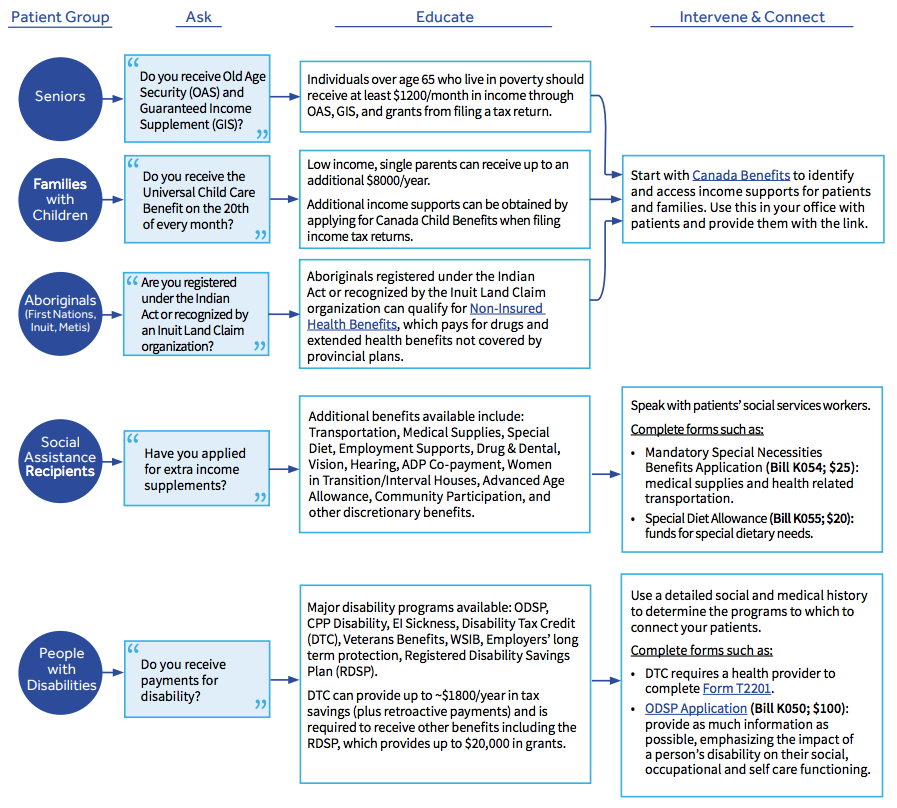Across Ontario, it’s estimated 20% of families can’t afford to make ends meet – that’s 1.57 million people living in poverty. Since it is a social determinant of health and a risk factor for many health conditions, it is critical that people who need assistance have equitable access to resources that can help them out of poverty.
Many community support networks and social services exist to address these issues, but often go underused because family health providers report being unfamiliar with the resources, or a patient’s complete situation, to make confident recommendations.
To address these growing inequities, we partnered with the Centre for Effective Practice and 211 Ontario to help create a poverty screening tool for physicians to help them identify patients in need of support before they even enter the exam room. Today, clinics using Ocean can leverage this tool at no additional cost. Together, we hope to reduce the divide between patients and access to resources.
How it works
When a patient arrives at the clinic, they receive an Ocean Tablet to complete pre-selected eForms. The forms can include questions like, “Do you ever have difficulty making ends meet?” and if the patient answers yes, follow-up questions appear.
A clinical note is automatically generated in the EMR, summarizing the patient’s responses. Even more importantly, the tool automatically compares the patient’s answers against a list of resources in 211 Ontario’s database, and generates a list of appropriate supports that can be printed out and shared with the patient. The corresponding resources give the physician a better understanding of what supports are available to address the specific needs of their patient and therefore make better recommendations.
Article continued after image:

Reprinted with Permission from Centre for Effective Practice (November 2015). Poverty: A Clinical Tool For Primary Care Providers. Toronto: Centre for Effective Practice.
One year after launching the screening tool at the pilot sites, we’re excited to say the results are extremely promising. On average, pilot sites recommend twice the amount of patients to community resources compared to before. One of the sites went from four referrals every two weeks to twenty in two weeks. Additionally, more and more doctors are completing the “Treating Poverty” workshops to become more knowledgeable of existing resources and more likely to succeed in helping patients out of poverty.
Equitable access across struggling populations continues to be a problem in Canada, even as we enter a new age in technology and healthcare. While in some cases technology creates a bigger divide, we are confident in this project’s ability to enable physicians to better communicate with their patients, and connect them to resources with their best interests in mind.
To get started with the poverty screening tool, email the CEP or visit their website.
For more information about the program, watch the video below:
